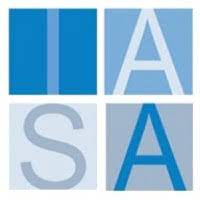Canvas overview: In the architecture industry, where exceeding client expectations is crucial, understanding their needs goes beyond project briefs and meetings. Customer personas offer a more nuanced approach. The persona technique can also be used in internal stakeholder scenarios.
A customer persona is a detailed profile representing a fictional character embodying the characteristics, motivations, and goals of a specific client segment. By creating customer personas in architecture, you gain a deeper understanding of your ideal clients. This allows you to:
Design with Deeper Empathy: When you view projects through the lens of your personas, you can design spaces that truly resonate with their needs, preferences, and workstyles.
Improve Communication and Collaboration: Customer personas foster better communication within your team and with clients. By referring to personas, everyone involved has a shared understanding of the client’s vision and priorities.
Target Marketing Efforts: Personas can inform your marketing strategy. By understanding your ideal client profiles, you can tailor your messaging and outreach to resonate with their specific needs and challenges.
Prioritize Project Features: During the design phase, personas help you prioritize features and amenities that will have the most significant impact on your target client group.
How to use this card
To fill out each section of the persona card, you’ll gather information from a variety of sources including market research, user interviews, and analytics data. For the Personal Details section, demographic data helps outline who the persona is, setting the stage for understanding their potential lifestyle and circumstances. In the Personal Story section, you’ll craft a narrative based on user behavior patterns and feedback, illustrating a day in their life to give depth to the persona. The Scenario block describes the context in which the persona uses your service, gleaned from user journey analyses. Expectations reflect the persona’s goals and fears, which you can determine from surveys and interviews. The Empathy Map dives deeper, asking you to consider what the persona sees in their environment, hears from others, says about their experiences, and does in their daily routine, which requires a combination of observational research and direct user feedback. Discussing the use of personas in business and technology involves communicating the persona’s story to stakeholders, showing how it aligns with business objectives, and ensuring that technical solutions address real user needs.
About IASA Global: IASA Global is a non-profit association for ALL Technology Architects which was established in 2002. The association is committed to improving the quality of the BT architecture industry by developing and delivering standards, education programs and developing accreditation programs and services that optimize the development of the architecture profession. The IASA network and membership consists of approximately 70,000 people in over 50 countries.
IASA Global has created the world's first and only Business Technology Architecture Body of Knowledge, (BTABoK), which is a free public archive of Business Technology architecture best practices, skills, and knowledge developed from the experience of individual and corporate members of IASA.
IASA has added templates for over 30 of the most frequently used BTABoK structured canvases into the Miroverse to help accelerate how Technology Architects collaborate on the architecture of the future. Give one a try today, and learn more about IASA at https://iasaglobal.org/.






